Beneath the surface of conventional art and the poised galleries that enshrine it, lies a pulsating underbelly of creative rebellion—underground art. The rich tapestry of subversive art communities finds its genesis in the throes of socio-political ferment and cultural upheaval, crafting a narrative threaded through with discontent and defiance. This essay embarks on an odyssey to unravel the historical context of underground art, mapping the subterranean contours that have moulded its emergence as a form of social commentary and a beacon of countercultural identity. As we probe the clandestine corridors of artistic dissent, we discover not only the essence of each pivotal movement but also the indefatigable spirit of artists who sought to challenge the established paradigms of their times.
Historical Context of Underground Art
The Pulse of History: Forging Art in the Shadows
Art, in its purest form, is an expression of the soul, a mirror to the myriad facets of human experience. It whispers tales of love, roars anthems of revolution, and often, in hushed tones, it speaks of the forbidden. Throughout history, the pulsing heartbeats of major events have pushed art into hidden realms, birthing underground movements embodying resilience, rebellion, and raw creativity.
Imagine standing in the midst of tumultuous times—you’re surrounded by rapid change, perhaps even chaos. It is within this very whirlwind that underground art movements have often found their roots. In times where voices are stifled and the brush or pen is censored, art becomes the silent rebel—daring to defy, eager to express.
Let’s delve into the catacombs of creativity, where the echoes of historical events have profoundly shaped the emergence of these covert art scenes. From the political unrest of the 20th century to the social revolutions of today, each event has indelibly etched itself into the canvas of time, inspiring artists to new heights of secret expression.
Take the Dada movement, born amidst the horrors of World War I. As society grappled with the devastation, artists sought to challenge the status quo that led to such destruction. Dadaism, with its unconventional techniques and satirical edge, became an artistic renegade, questioning the very fabric of a society on the brink of collapse, all while eluding the mainstream eye.
Similarly, the emergence of Soviet underground art during the Cold War era was a direct response to the oppressive environment of the time. Artists operated in the shadows, away from the prying eyes of a regime that dictated artistic production. They created works that were not only aesthetically different but that also carried messages of liberty and autonomy, becoming symbols of an underground resistance to the rigidity of state control.
Subsequently, consider the influence of the Vietnam War, which galvanized the American counterculture of the 1960s and 70s. Artistic communities thrived in underground settings, their works often laced with anti-war symbolism, advocating for peace and civil liberties, whilst reflecting the turbulent social landscape dominated by the fight for racial equality and LGBTQ+ rights.
Fast forward to contemporary times, and one witnesses how the global financial crisis, climate change, and a worldwide call for social justice continue to spawn new waves of underground movements. Street art, for instance, pops up overnight on city walls as transient testimonies to the struggles and sentiments of our era. This guerrilla art form emerges from the depths of urban landscapes, often uncredited, fleeting, yet fierce in its message and impact.
Underground art is pregnant with the whispers of history; it flourishes in the silent interstices of society’s grand narrative where conventional art dare not tread. Bold in its conception, secretive in its execution, it demands only the most vigilant of eyes—those willing to peer beneath the surface and engage with the defiant spirit that pulses within. These movements aren’t just a footnote in art history; they are vibrant threads woven into the very fabric of collective human experience, shaping and reshaping the way we view our world and each other.
In essence, these hidden art veins continue to thrive, pulsing defiantly beneath the skin of mainstream culture. Their birth and life owe much to the seismic shifts in history, carrying forward a tradition of cultural dialogue that is as important now as it was then. They invite us to look deeper, to question more, and to appreciate the complex narrative of humanity painted in the colors of rebellion, resilience, and raw, unbridled creativity.
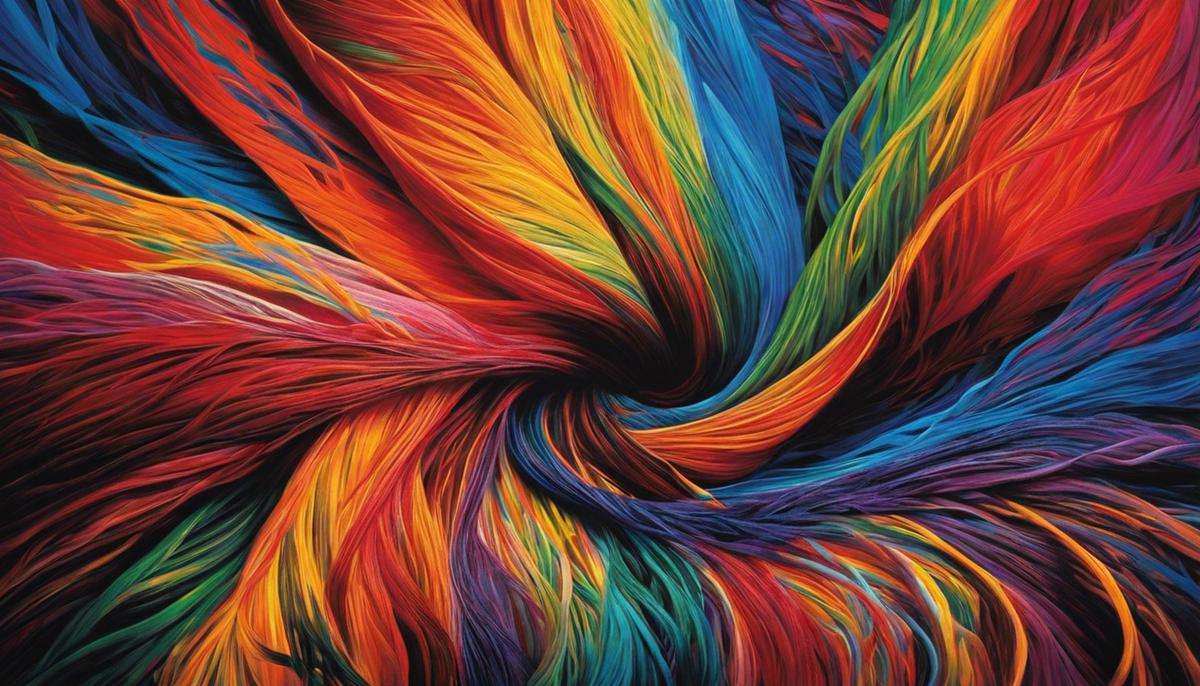
Prominent Underground Art Movements
As art continues to unfold in myriad directions, it paints its stories beneath the watchful gaze of contemporary society. Underground art movements, bristling with subversive energy, silently revolutionize the canvases of our world, often emerging from the need to rebel and make voices heard.
A significant underground movement that draws the eye is the punk art scene, born amidst the rebellious echoes of the 1970s. This movement, infused with DIY ethics, began as an aggressive stance against the establishment. Visual artists like Jamie Reid, renowned for his work with the Sex Pistols, created jarring images that became synonymous with punk music and ethos. Reid’s ransom-note style collage for the album cover of “Never Mind the Bollocks, Here’s the Sex Pistols” is an iconic hallmark that has inspired generations of artists.
In another corner of the art world, the feminist art movement has been reshaping the landscape since the 1960s, although it truly gained momentum in the 1970s. Artists like Judy Chicago ushered in a new dialogue that challenged patriarchal structures within the art community and beyond. Chicago’s masterpiece, “The Dinner Party,” is a significant work that honours women from history, blending high art with crafts associated with women, such as embroidery and ceramic.
Moving through the dynamic stream of art, the Stuckist movement emerges as a critical voice against the conceptual art that dominated the turn of the 21st century. Formed in 1999 in Britain, the Stuckists, co-founded by artists Billy Childish and Charles Thomson, championed painting and called for an art of personal vision that connects with everyday emotions. The group’s name itself, derived from an insult by Tracey Emin to Childish about being “stuck,” became a banner for a new-wave appreciation of figurative painting.
One cannot explore the terrain of underground art without noting the profound influence of Japanese Superflat, conceived by artist Takashi Murakami. This movement, which surfaced in the late ’90s, is deeply rooted in the post-World War II period and reflects Japan’s unique consumer culture, anime aesthetic, and the flattened illusions of the country’s economic bubble. Superflat, while playful and cartoonish in appearance, critiques and explores themes of consumerism, sexual fetishism, and cultural identity.
In the quest to illustrate the human experience, subterranean art currents have continuously provided alternate lenses through which to perceive the world. They seize the essence of what it means to be alive in a given moment, capturing eternity in the brush strokes of rebellion and innovation. Each movement, with its pantheon of artists, holds up a mirror to the society it seeks to transform, reminding us that art not merely exists to beautify but to provoke thought and kindle change.
Through the whispers of murals, the bold statements on canvas, and the irreverent performances that grace underground spaces, our shared narrative unravels. These movements and their key figures are pivotal in not just reacting to the world as it changes but actively serving as catalysts for those very changes, one creation at a time. Art, in its raw and unfiltered underground expressions, continues to define, defy, and describe the ever-evolving story of humanity.
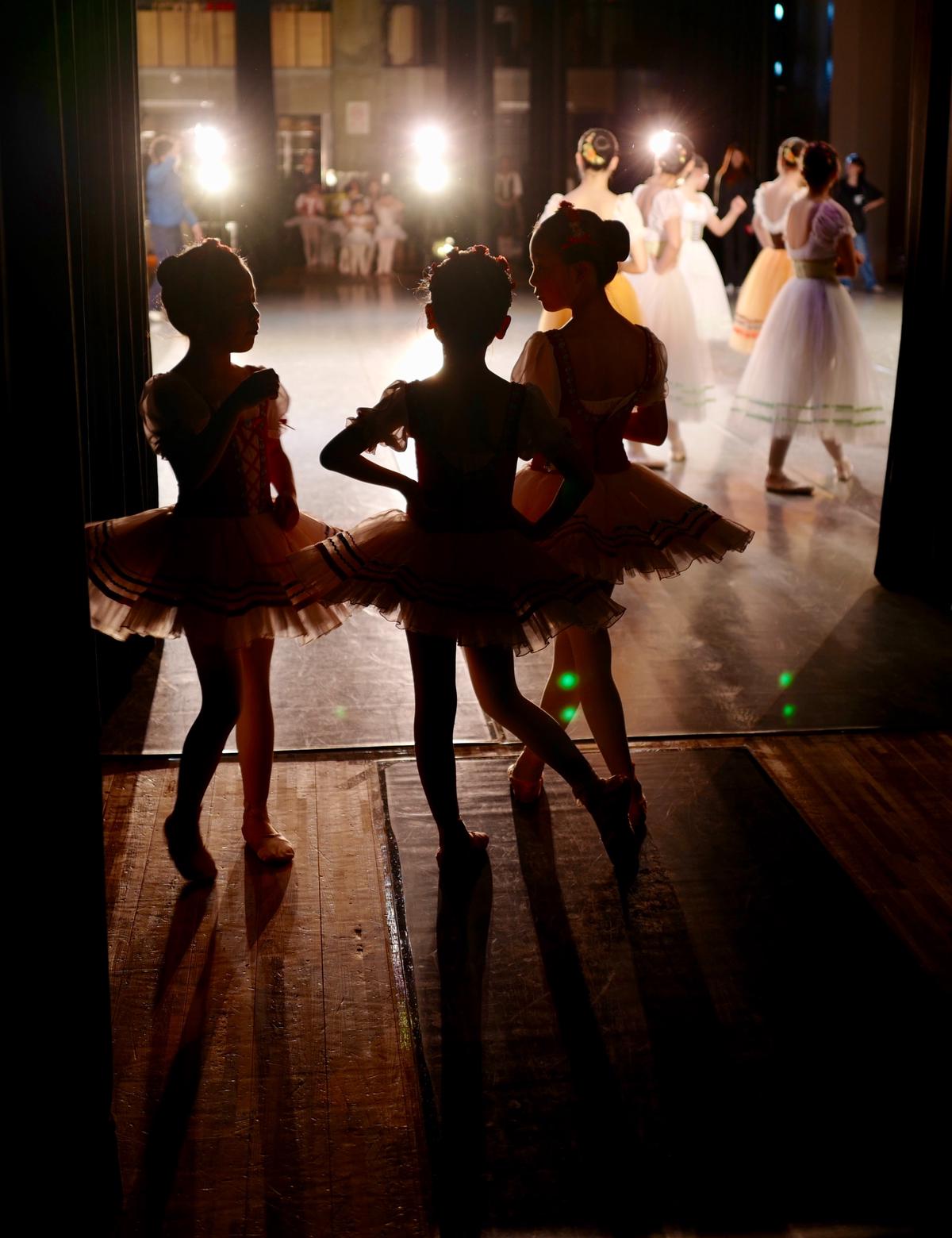
Mediums and Techniques in Underground Art
Immerse Yourself in the Allure of Underground Artistry: Mediums and Techniques Unveiled
Venturing into the wonderfully concealed spheres of underground art, one uncovers an array of materials and practices that resonate deeply with the unorthodox ethos of these subcultures. Creators within these realms unapologetically select mediums and techniques that amplify their message, rebel against the conventional, and foster ingenuity.
The adoration for everyday and repurposed materials is noteworthy among these artistic spheres, where the mantra is to make art accessible and expressive. Objects from daily life, infused with profound meanings through assemblage art, transform into powerful vessels of communication. In doing so, creators make a pronounced declaration: Art thrives beyond the ivory towers of fine art galleries and museums.
Spray paint has become synonymous with the underground art scene, and not just because of its utility in graffiti. It functions as a swift and bold statement-maker. The ephemeral nature of spray-painted works on urban canvases mirrors the transient essence of the cultures they represent, tied intrinsically to the now.
Printmaking, too, enjoys a revered place, particularly in producing zines and posters. The allure lies in its directness and the hands-on approach, enabling mass production that remains touchingly human. This medium swings open the doors for widespread dissemination of ideas, while retaining a sense of raw authenticity.
Digital art has surged as a favorite due to its inherent potential to be shared far and wide with immediacy. The digital medium transcends boundaries and democratizes art-making, allowing artists from every corner of the planet to contribute to the vibrant quilt of underground expression.
Within every stroke, cut, and pixel lies a yearning for expression that refuses to adhere to tradition. Techniques thrive on experimentation, where layering, juxtaposition, and the blending of materials form heart-stirringly complex narratives. Hybridization of mediums is also common; an artist may begin with drawing, advance to painting, and evolve the creation further with digital manipulation. This mélange produces an art form inherently suited to the multifaceted nature of underground artistry.
Performative techniques materialize through flash mobs, guerrilla theatre, and impromptu public installations, ensuring art experiences leap out of the static realm and into dynamic real-life contexts. Such practices contest the passive consumption of art, inviting observers to share in the unsanitized fervor—the raw pulse of creation.
In the underground, art becomes a bold emissary, challenging perceptions and inviting dialogue. Whether through the organic feel of traditional supplies or the sleek touch of new media, the mediums and techniques adored in underground art resonate with a pulsating authenticity. Out of the limelight and away from polished surfaces, they embody the voice of dissent, the hand of innovation, and the soul of a culture hungry for genuine expression.
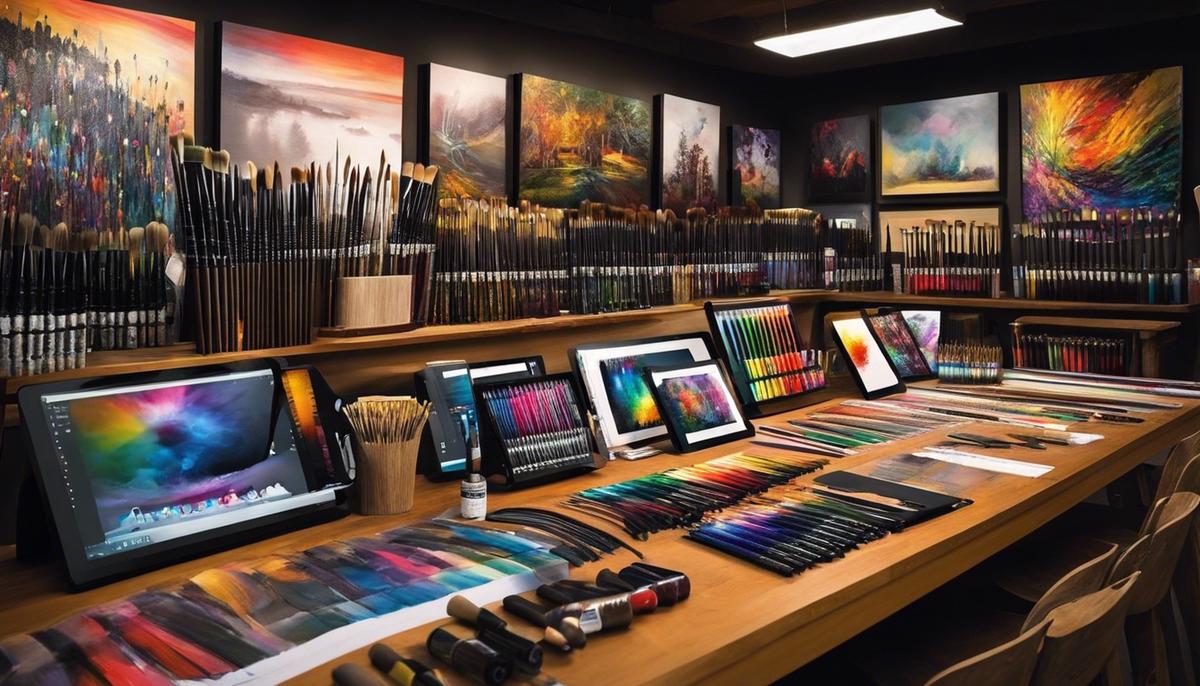
Cultural Impact and Legacy
Delving into the wellspring of creativity that flows through the veins of subterranean artistic expressions reveals how the underground has left an indelible mark on mainstream culture. At the fore of this concept is the idea of assemblage art—a vibrant puzzle pieced together from the unexpected, every day, and reclaimed. From the scraps of our existence, artists weave new narratives, crafting beauty and commentary from the odds and ends of our daily lives.
The gritty texture of the urban sprawl has found a voice in the hiss of the spray can. Street artists who mastered the art of spray paint have leaped from the shadows of alleyways to the bright lights of galleries, their works selling for sums that were once unthinkable. Through vibrant strokes, these visionaries have turned bleak city corners into kaleidoscopic tapestries, earning the regard of a once-sceptical public.
Equally revolutionary has been the art of printmaking, especially in the realm of independent publications. Zines and posters have galvanised communities, disseminated avant-garde ideas, and given volume to muted voices. These hand-crafted gems of the underground art scene are not just carriers of the written word but are a visual feast, often etched, carved, and stamped with the irrepressible identity of their creators.
In the boundless domain of the digital, underground art finds an echo chamber, its influence magnified by the power of sharing and virality. Digital art has democratised the arena, giving rise to an instantaneous stage where one’s creations can ricochet across the globe in a matter of clicks. The internet has emerged as a bustling gallery without walls, borderless and teeming with potential.
Hybridisation has long been the companion of the pioneering spirit in art. Today’s underground artists are no strangers to this technique, merging media in ways that would have been inconceivable in more traditional settings. By integrating various forms—video, sound, sculpture, and text—these artists thrust the viewer into immersive experiences, challenging the sanctity of old paradigms.
Then there are those artists whose canvas is the public sphere itself, employing performative techniques such as flash mobs and guerrilla theatre to astonish and awaken. These compelling spectacles blur the line between art and life, prompting passersby to question reality and engage with pressing social issues. This magnitude of interactive artistry transforms the mundane into the extraordinary, coaxing dialogue and introspection.
Through these bold strokes, underground art persists as a living dialogue, ever-evolving and provocative. It challenges the observer to dismantle preconceptions, to engage with the unfamiliar, and to gather fresh insights into the human condition. Often born of protest, critique, and innovation, underground art will continue to ripple through the fabric of mainstream culture, ensuring the legacy it leaves is one of relentless inspiration, audacity, and the unfolding story of who we are.
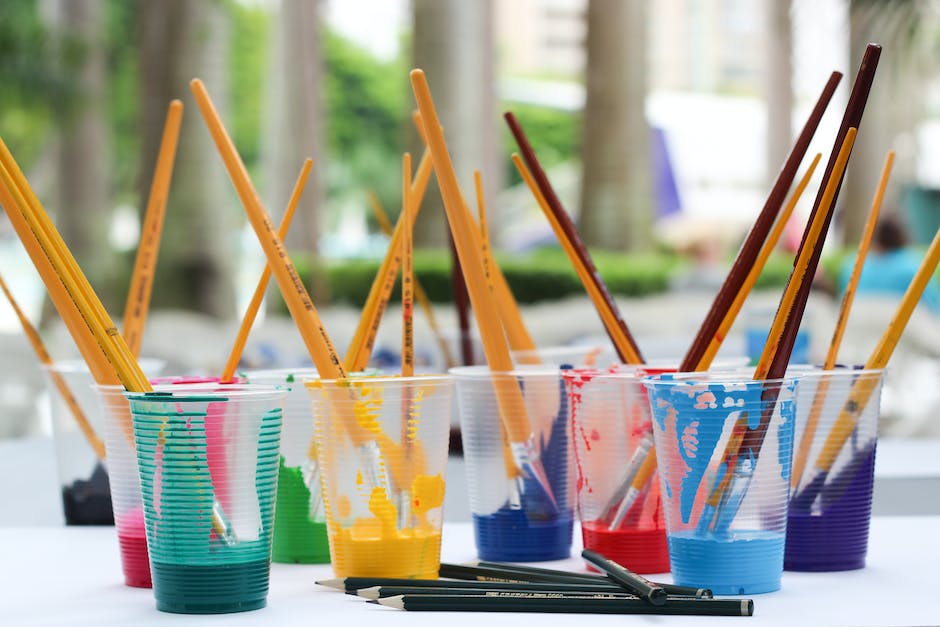
Controversies and Legalities
Amid the raw expressions of color and line, underground art finds itself often at odds with the establishment, sparking both legal and ethical debates. Submerged beneath the conventional, this vibrant artform dives deep into controversy as it confronts the rules of the art world and the broader society.
The legality of street art constantly dances on a thin line. As spray cans rattle and murals come to life across cityscapes, questions of property rights and vandalism emerge. The artist’s intention to embellish public spaces clashes with laws designed to protect property. Moreover, copyright issues often arise as underground art is reproduced without the artist’s direct permission, blurring the boundaries of intellectual property rights.
Ethical dilemmas also loom large. The depiction of provocative themes and figures in unauthorized places exposes communities to unsolicited art that can be seen as offensive or confronting. At times, this art may inadvertently exploit sensitive cultural symbols or social issues as fuel for shock value or notoriety, sparking heated discourse over the ethical responsibility of the artist towards public sensibilities.
Another debate centers on the preservation of underground art. While the ephemeral nature of street art is part of its charm, some argue that it represents a transient historical account that deserves conservation. However, conserving what is essentially transient art raises questions about authenticity and ownership, not to mention the costs and practicalities involved in preservation efforts.
Underground artists sometimes find themselves walking a tightrope between authenticity and commercialization. As this formerly niche art moves into galleries and auctions, does it risk losing its original spirit? The commercial success of underground art has led to accusations of selling out, where artists are critiqued for transitioning from counterculture creators to mainstream contributors.
Whether through the stencil, the sticker, or the hidden manifesto, underground art disrupts not only aesthetics but also the norms of legal and ethical statutes. Each brushstroke, each tag, and each installation is a statement in this complex dialogue—a confrontation between freedom of expression and the restraints of society.
This art, which thrives in the interstices of legality and morality, invites us to a larger conversation about the value we place on expression and the necessary boundaries within which it operates. In circumventing the establishment, underground art challenges not only the status quo but also the very fabric that holds the art world together. In this defiance, it remains a pulse of innovation, an indelible mark on the canvas of humanity, and an emblem of the perpetual dialogue between creation and constraint.
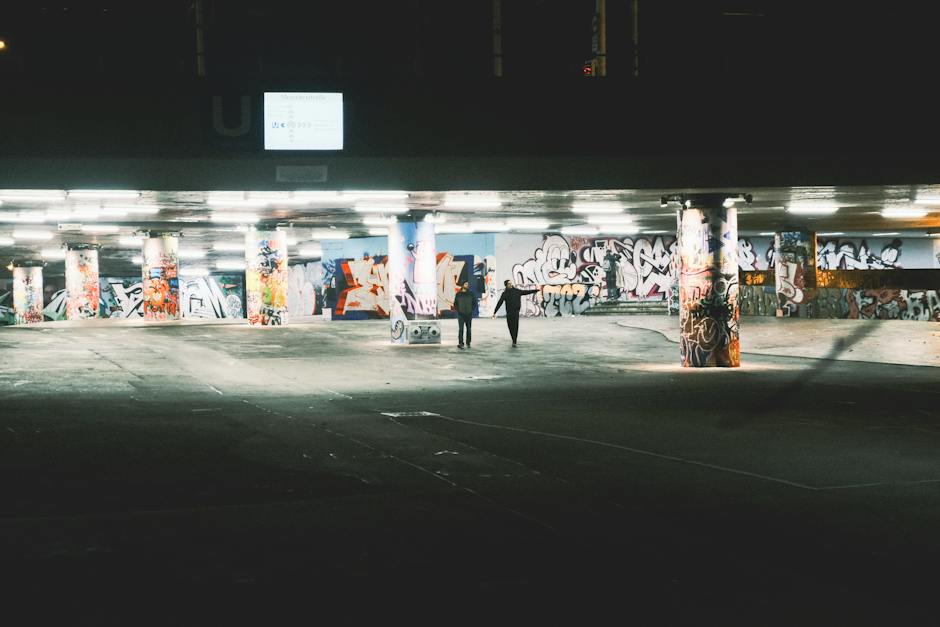
The dialogue between underground art and mainstream culture is rich with complexity and consequence, reflecting a dynamic that both challenges and reshapes societal norms. As we survey the landscape of influence and legacy left by these subversive movements, it becomes evident that their reach extends far beyond the niches of the art world into the very fabric of contemporary life. Underground art continues to provoke and inspire, reminding us that at the heart of creativity lies the power to question, to subvert, and to reimagine the world around us. It is this indomitable spirit that ensures the undying relevance and perpetual evolution of underground art, affirming its role as a compass for cultural introspection and a harbinger of change.
























